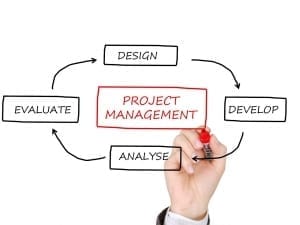5 Project Management Mistakes and How to Avoid Them

In fact, did you know that 70% of organizations have suffered at least one project failure in the last 12 months?
It doesn’t have to be this way. With effective project management, you can stay on top of your company’s various projects and priorities.
But if you’re new to project management, it can be easy to mess up. Keep reading for 6 project management mistakes and how to avoid them.
1. The Goal is Unclear
First and foremost, everyone in your organization needs to understand the goal of your project. What’s the main objective?
Understanding your end result will help make the entire process simpler. If you don’t have this, your project will likely fail.
Think about your ideal final state. What do you want to have done?
Then consider how you will measure the success of your project. Will it be when the website is finished and launched? Perhaps you’ll base success off of results like sales.
No matter the metric, having this clearly defined will make your experience much better.
2. Failing to Manage Project Scope
For many project managers, scope creep is one of the most common management mistakes. Let’s talk about it.
As projects progress, it’s common for you to discover additional tasks that need to get done. Other ideas may emerge. New requests may come in from other stakeholders.
All of this can add to the scope getting out of hand, referred to as scope creep. In definition form, scope creep is adding more features and functionality to a project without addressing the changes to timeframe, resources, and/or costs.
To avoid scope creep from derailing your projects, be sure to have a clear process in place when new asks or changes do come in. Because they will. They always do.
Consider creating a scope document. At the beginning of your project, clearly outline all of the tasks you’re going to complete for this project. Have this agreed upon and assigned by all stakeholders.
Then, as new things emerge, take time as a group to assess the impact to both budget and schedule. If they’re minor, okay. If they’re major, it’s usually best to assign those tasks their own separate project to be completed at a later date.
3. Poor Communication
Whenever you’re working with a group, communication is key. That’s just a given.
But when you’re the project manager, and your job is to make sure things get done at a high level on the right schedule, communicating effectively is even more important.
Set up systems to keep everyone informed and involved.
Will you have a weekly meeting to address progress, roadblocks, and answer questions? Will you communicate via email or a messaging service? What type of project management software will you use and what functionality does it have in terms of communication between team members?
These are all important things to consider. The most important thing is to have clearly defined channels of communication and a regular schedule that people can depend on.
4. Lack of Prioritization
As a project manager, here’s one of the most important lessons you’ll learn: not all projects are created equal.
This means that some tasks are massive and some are small. Some will have a massive impact on the business’ bottom line immediately. Others will take a while to show results.
With so much variation, it’s crucial that you get good at prioritizing.
Take some time to come up with a system that aligns with your organization’s goals. Think about the following things as you prioritize:
- The impact on revenue
- The impact on customer experience
- The long-term impact
- The amount of resources needed
- The length of time for the project
To do this, it may be helpful to break projects up into tasks and subtasks. This will help you truly understand the complete scope of projects before you make a final decision on what needs to get done first.
You can also loop in managers from across the department or company to get their input as well. This can be super helpful. Learn more in this post.
5. Poorly Estimating Time and Budget
At the end of the day, time and budget are two of the most influential factors in your life as a project manager. So estimating these incorrectly can completely derail your projects.
It’s easy to overlook potential issues as you’re planning. To avoid this, make sure you include managers as you make plans. They’ll have more context and understanding of the ins and outs of their areas.
Also always plan in some wiggle room when it comes to timeframe and costs. They often are higher than you expect at first.
It doesn’t have to be massive, but include an extra 10% for budget and timeframe. You’ll thank yourself later.
Project Management Mistakes: Avoid Disaster
There you have it: 5 of the biggest project management mistakes you should try to avoid. By avoiding these mistakes, you’ll save yourself and your company a lot of grief.
And your projects will be more successful, meaning great things for your career.
Now that you’ve read through these tips, next it’s time to put them into place. Where do you need the most help? Start there and move on as you go.
Want to learn more about thriving in your career? Check out our blog for additional tips and tricks today.



 Project management in business can be challenging and so hiring someone who knows what they’re doing and having the right tools in place can make a big difference between your project being a success or a flop. Managing a budget, resources, and the team takes some serious organizational skills so if you want your business project to be a success, here are 5 tips to help you along the way.
Project management in business can be challenging and so hiring someone who knows what they’re doing and having the right tools in place can make a big difference between your project being a success or a flop. Managing a budget, resources, and the team takes some serious organizational skills so if you want your business project to be a success, here are 5 tips to help you along the way.